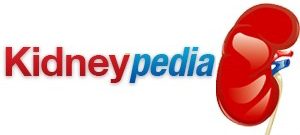Creatinine is a bodily waste generated in the breakdown of creatine, which occurs in muscle metabolism. Approximately two percent of the body’s creatine is converted to creatinine through muscle action daily. The substance enters the bloodstream from the muscles, the bloodstream carries it to the kidneys, and the kidneys filter it from the blood and deposit it in urine to be ejected from the body. A certain amount of creatinine remains in the blood at all times, but when a blood test reveals a low or (particularly) a high level of serum creatinine, this indicates a potential kidney problem. That’s especially true when high serum creatinine occurs in conjunction with low urine creatinine levels.
Low
A number of things can cause low creatinine levels in the blood. These include a diet low in protein, decreased muscle mass (e.g. due to old age, or simply to being a small or slight person), pregnancy, and liver disease.
Obviously, liver disease is a cause for concern; however, low creatinine levels by themselves aren’t a reliable way to diagnose liver disease. Generally speaking, low serum creatinine levels are a good sign (unless they are truly excessively low, or there is other evidence of a health problem that could have this result).
Urine
Low urine creatinine levels, unlike low serum creatinine levels, are a possible sign of renal disease, especially when coupled with high serum creatinine.
The two tests (serum and urine) should be used in conjunction, however, as low urine creatinine by itself could simply show that low levels of creatinine are being produced through muscle activity and hence low amounts filtered from the blood (because low amounts are there to start with).
Low urine creatinine combined with high serum creatinine does pinpoint a problem in the kidneys and is cause for further investigation and therapy.
High
High serum creatinine levels (measured against a proper baseline, which varies with age, gender, and muscle mass) is a strong indicator of renal disease, especially when occurring in conjunction with low urine creatinine levels.
Any impairment of renal function is likely to result in high serum creatinine, because it reduces the kidneys’ ability to filter this waste product from the blood. The most common causes of renal disease are diabetes and, over time, high blood pressure, so tests for serum creatinine are commonly called for with patients suffering from either of these diseases.
Treatment
Elevated serum creatinine levels are not a disease as such, but when they indicate the presence of renal disease resulting from a known cause such as diabetes or high blood pressure, the level of creatinine in the blood can be a good monitor for the effectiveness of treatment for those disorders.
One result of elevated serum creatinine is that patients with high blood pressure will usually be placed on medication rather than relying solely on diet and exercise to control the condition. The reason for this is the importance of protecting kidney function, requiring that blood pressure be reduced quickly.
In some cases, patients with high blood pressure may actually show an increase in creatinine levels in the early stages of treatment. This is not an indicator of kidney damage, but an expected result of changes to dilation of blood vessels within the kidneys. However, normally creatinine levels drop as treatment continues. If they remain high, this can indicate damage to the kidneys, and more tests and monitoring may be required, and therapy depending on the severity of the damage.
